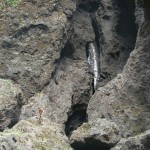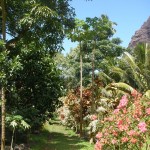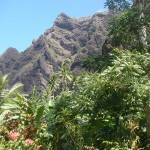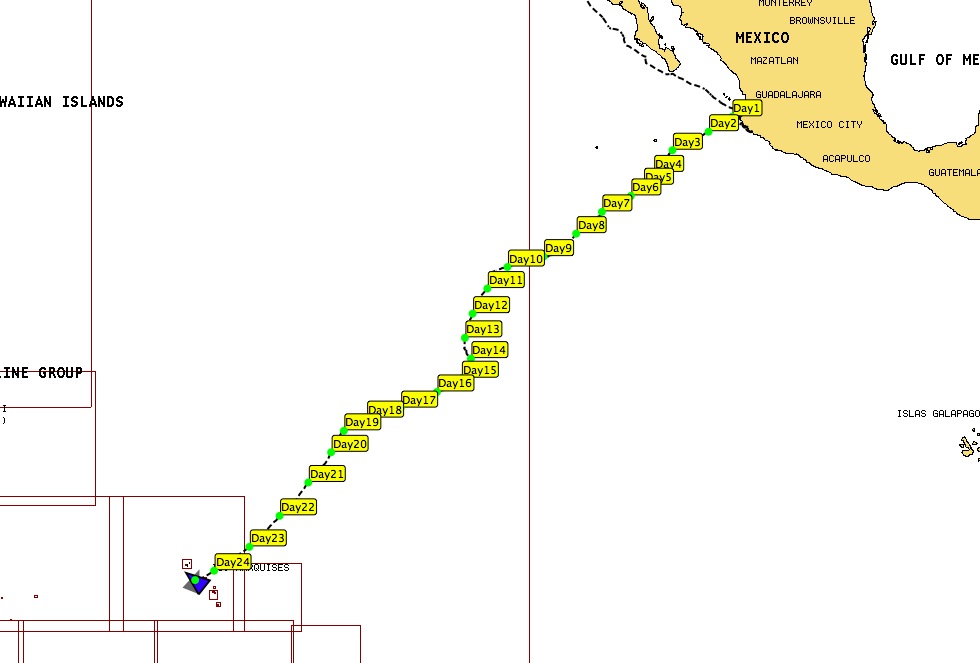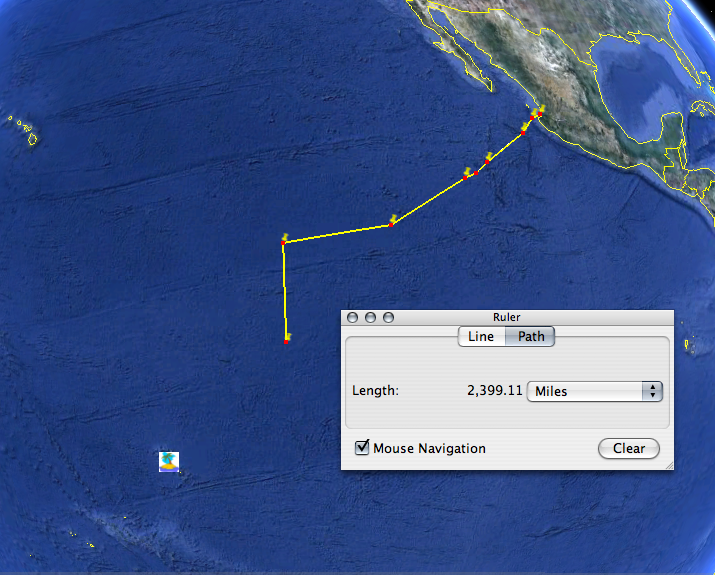May 20 2010
The Land of Plenty & Strange
There are some seriously strange plants and animals here.
In the states, I feel perfectly comfortable out in the woods–I feel no fear of what I will encounter, I stride purposefully and confidently through our wilderness. Until now, I hadn’t realized that the primary reason for that confidence is my familiarity with all of the plants and animals out there.
Embarrassingly, I find that I am uncomfortable in these woods. To start with, they aren’t even woods–it’s clearly a sort of jungle, though far drier than your stereotypical jungle. There are fruit trees everywhere: coconut, papaya, mango, pamplemoouse, pistach, noni, banana, and many others for which I have no translation. This is a land of plenty: you could survive off of the fruit hanging from trees alone, not even considering the abundance of sea life. We have almost none of these trees at home, and they have none of our trees. So I’m walking through a strange jungle, that’s cool, I can dig it.
The creatures are another thing.
We sailed over to Hakatea Bay, the bay next door, for a four-day excursion with our friends Mike and Hyo from the boat Io. Mike is a marine biologist, so he’s a good one to have around when you’re getting spooked by the local floral and fauna.
Hakatea bay has no town, no road to reach it, and only a few rough huts spread out along the beach. As we dinghied to the beach, getting ready to jump out into the water to drag the dinghy in through the surf, Mike informed us to “watch out for” the many black-tipped reef sharks that hung out right up in the surf. Sharks? His nonchalant statement implied a lack of danger, and in this case, “watch out for” was meant as “look for them because they’re very cool to catch a glimpse of.” These black-tipped reef sharks were about a foot long, and didn’t seem overly interested in ankles, so they went onto the list of ‘not so dangerous’ (as long as they come in the mini variety, at least).
As soon as we rolled up onto the beach, we noticed the crabs. They were all over, but that turned out to be just the advance party. We wandered a little ways into the jungle on the edge of the beach in search of coconuts, and discovered crabland. The ground was covered with dirt and palm fronds, and the crabs had dug enormous holes and networks of tunnels, pockmarking the entire area. The crabs were about the size of a large outstretched hand, with a large right claw and small left one, two beady eyes sticking up on little wiggly eyestalks, and a translucent white shell. They could run very fast in a sideways direction–as fast as you can jog. And there were thousands of them, everywhere, making a creepy collective clicking noise as their crabby body parts click together. As you stepped over palm fronds and downed logs and what not you had to be careful not to step on them, and if you got too close they would dart out on a sideways run, or else wave their pincher. Lift up a big frond and there will be twenty of them crabbing away, wiggling their little beady eyestalks at you. The question again: are these things dangerous? Well, no, not really, you can just reach down and pick them up if you’re fast enough. Be careful not to get pinched by that big claw, but that’s easy to avoid. But man did they creep me out.
My final experience with them was particularly unnerving. Mike and I dinghied in to the beach in the dark that night in an attempt to nab some lobster that he had seen earlier. On our way in Mike tells me to “watch out for” both needlefish and stingrays, and this time it wasn’t just for a cool sight. Apparently needlefish are attracted to flashlights and have a sufficiently pointy sharp snout as to impale you, and Mike had seen some on our way to shore. And the stingrays, well to be honest I don’t even know where they are or how they’re bad for you, whether they cut or poison or what, and right there you see that it’s the unknown that is fearful. So we’re jumping out in the surf on this moonless night and I’m thinking “how can I avoid this stuff when I don’t even know where it is going to be lurking or what it will do?”
We drag the dinghy up onto the beach and then he shines the light on a shallow pool of water, and there’s a sight that I don’t expect to ever see again, which is a vast carpet of thousands upon thousands of those crabs, covering the entire clearing, all clicking in that particularly creepy way, so dense that they were crawling on top of each other. It could have been a scene from a horror movie, if you just threw someone onto that carpet of crabs and watched them devour the body–of course in actuality they would all just run away, but boy oh boy was it a creepy sight. The sound was the clincher, all that evil little clattering of carapaces as they scurried around the bend en masse. Just creepy as all hell.
The next day we all hiked two hours into the jungle along a well-travelled path to the base of a large waterfall. The cascade is currently only a trickle, owing to an extended dry spell, but there was a freshwater pool at the base of these impressive precipitous cliff walls. It looked refreshing, until Mike pointed out the little crayfish jobbies. They ringed the shallows of the pool, waiting for something to pinch on. They happily swam up to pinch ankles, whatever you put in there. That made hanging out in the pool mildly unattractive. And then the eels showed up. Big-ass freshwater eels, four feet long and four inches in diameter, with a disgusting little face up front, with their large mouth held partially open. As you splash the surface of the water they come closer, curious to see if they can eat the source of the splashing. Neither the crayfish nor the eel seemed to be afraid of us–they seemed rather willing to take a test nibble of whatever, before buggering off.
I do not consider myself easily spooked, freaked out, or scared. But these new water creatures have been beyond my understanding and I admit that I am made uncomfortable by it. I don’t know what the dangers are, is the thing. I don’t know what I can and can’t do. If I stick my hand in the water, is the eel going to dart away or is he going to swim up and take a bite?
I realize that the confidence and utter lack of fear that I feel in the united states is largely a result of my familiarity with the environment. Being in this foreign land of strange new creatures, and feeling weirded out by them, is humbling.
It does make things exciting. Like being in an Indiana Jones movie with snakes and booby traps and poisonous things. I just have to sack up and pet the eels, so to speak.
